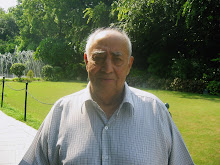Delhi Darshan 1936
Father re-married in the summer of 1935, only six months after my mothers’ death in Campbelpur, the headquarters of Attock District on the border of the North Western Province of British India. He brought his new wife and me, his son, to Jammu, the winter capital of Jammu and Kashmir state. We had a very big house, a wonderful cook, a maid, and a night guard. Father was fond of lavish living and eating in style.
Soon father decided to take a break and travel a bit. It was the winter of 1936/37. We left Jammu by train and got off at Amritsar, where we went to see the Golden Temple. The temple built in a pool, with a gold canopy, overawed us. Inside the singing by granthis was melodious and very pleasing to the ears. After paying obeisance at the temple we went for lunch to a vegetarian restaurant in the heart of the city. We were served thalis which had twety five katoris [vegetarian dishes] in each of them. The meal lasted for more than an hour.
Next morning we arrived in Delhi [the imperial capital]. Outside the railway station was a big ‘hotel’ in which we were given a suite, comprising a hall, a bedroom with an attached bathroom and a small ante-room. Here we were treated as real VIPs, breakfast with eggs to order, ham, jam, cheese, butter and toast with tea or coffee. Lunch and dinner were one non-veg, two veggies, rice or biryani and tandoori roti. For all this board and lodging we were charged Rs.18 a day.
Father called for a taxi to show us around. The day-long trip took us to Kutab Minar, the tower built by Kutbuddin Aibak before the advent of Mughul rule. The tower has 365 stairs and I climbed them all to reach the top. Next to the tower there is an Ashoka pillar dating back to Emperor Ashoka’s time. Though it is made of metal there is no rust even after so many centuries.
Next we saw Humayun’s tomb, a beautiful mausoleum, where the last Mughal emperor, Bhadur Shah Zaffar, retreated after Delhi was captured by the British in 1857. Its sprawling lawns and terraced gardens are very beautiful.
From here we went to Lal Qila, Red Fort, built by the Mughal emperor Shah Jahan, who also built the world-famous Taj Mahal in Agra. Red Fort reminds one of the grandeur of the Mughals who ruled India for more than seven generations. Dewan-e-am and Dewan-e-khas are halls where the kings used to hold court, Dewan-e-am for the general public to hear their petitions etc and Dewan-e-khas where he conferred with his courtiers, generals and advisers. The famous peacock throne was in one of these halls. The harem where the begmat lived has a hall with mirrors studded in the walls and the ceiling to enable the court ladies to see their dresses from all angles of their body. There was arrangement for bathing in hot water.
It was an ingenious arrangement as water came into a small pool to enable the bather to relax in hot water as one can do today in a bathing tub. During the Mughal days a canal ran through the fort. Water in the canal came from the Jamuna.
The fort has much more to offer, the small museum where there are royal dresses, and Col Niclson’s uniform with the bullet hole that killed him. In side the compound there is Moti Masjid where the king used to offer nimaz. It is a very beautiful mosque and during Moghal times it was studded with jewels.
The famed mena bazaar has small shops selling, itars [Indian perfumes], jewelry, artifacts, and ivory goods. This bazaar exists from Mughal times.
From the fort the taxi took us to see the Secretariat, the vice-regal palace [now Rashtripati Bhavan], Parliament House and Cannaught place [the main shopping centre of New Delhi]. On our return to the hotel Father asked for the bill for going round. It was Rs15 including the charges for the guide. When father paid the driver he said “Sir, some Baikshish for me and the guide”. Father gave him Rs 5. He was overjoyed and gave Father a ‘furshi salam’ [a bow almost touching the ground].
I was very impressed with the grandeur of New Delhi and wished I lived there, a wish fulfilled in 1947, more than a decade later, when I joined Nehru’s staff .
In 1936 Delhi had an old world charm and people were very polite and helpful. The language was Urdu and it was full of polite phrases. What is your name, was ‘ap ka ism-e-sharif?’
Where are you from was, ap ka daulat-khana kahan hai’? Similarly no-one said ‘sit down please’ but ‘tashrif rakhian’.
Today Delhi has become part of Haryana culturally, linguistically and emotionally. Indiscipline, rudeness, road rage, the craze for partying, drinking and brawling has become part of Delhi life. God be praised.
Friday, May 1, 2009
Subscribe to:
Post Comments (Atom)

Great description of Delhi when it was the capital city of the British Raj! Thanks for letting me host this on my blog too.
ReplyDelete